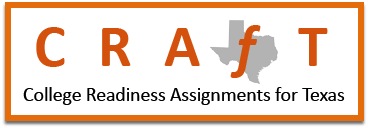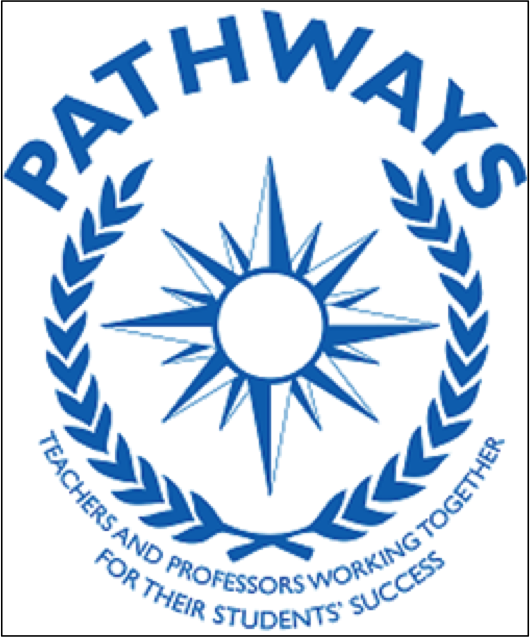AVATAR and College Preparatory Courses
June 2014 | Denton, Texas
BY: Jean Keller and Mary Harris
AVATAR (Academic Vertical Alignment Training and Renewal), a program funded by the Texas Higher Education Coordinating Board and implemented by the University of North Texas and the North Texas Regional P-16 Council, collaborates with 11 Education Service Center Regions to support the work of regional vertical alignment teams (VATs) whose focus is on college readiness and success in mathematics, English language arts, or science. These teams work across secondary and post-secondary educational institutions to promote college readiness and success. Not surprisingly, VATs in several regions have been tapped by their school districts and colleges as consultants about the new College Preparatory Courses mandated by House Bill 5 (HB 5), 83rd Texas Legislature, Regular Session, 2013. This article shares issues raised in the work of several of the AVATAR sites that have become involved with College Preparatory Course (CPC) development.
Purpose
Rather than telling the stories of teams formed within each region, we invite you to contact team leaders and direct attention to this article, which contains some of the issues that have arisen in the development and planning for the implementation of CPCs. Issues are presented here as questions followed by some of the thinking of CPC partners. We hope this format will allow additional sharing of ideas.
Brief Overview - How It All Started
The experiences found in this article encompass AVATAR partners led by Regions 10, 11, 12, and 15 Education Service Centers, whose headquarters are in Richardson, Fort Worth, Waco, and San Angelo, respectively. Since HB 5 specifies that “each school district shall partner with at least one higher education institution to develop and provide courses in college preparatory mathematics and English language arts,” and feeder patterns of independent school districts (ISDs) to institutions of higher education (IHEs) vary, leadership for forming partnerships has differed. In Regions 10 and 15, the ESCs promoted partnerships by collaborating with multiple school districts, two- and four-year colleges in their regions and facilitating conversations among them. In Regions 11 and 12, community colleges called together ISD and 4-year college partners to facilitate planning and idea sharing. Tarrant College District, with six campuses in and near Fort Worth, and McLennan Community College in Waco, led the formation of College Preparatory Course (CPC) development teams. Their efforts resulted in creating at least one CPC team for mathematics and one for English language arts (ELA). In addition, they succeeded in developing syllabi and supporting material for courses that prepare underprepared high school seniors for college entry. In Regions 12 and 15, AVATAR VATs were directly involved as the pre-existing VATs in those regions joined other community partners required for CPC planning. Additionally, the North Texas Regional P-16 Council, which includes ESC Regions 10 and 11, higher education, businesses, and non-profit stakeholders, hosted a panel and roundtable in early May 2014 to foster information sharing of regional CPC planning.
Common Questions Addressed by CPC Partners
Will the CPCs be offered for dual credit?
Answers to this question vary, with some community colleges and districts intending not to offer dual credit for a population that is not college ready at the time of course enrollment, and others planning to offer dual credit because the purpose of the CPC is to enable the student to achieve college readiness. When credit is planned, questions have been shared regarding how the credits awarded will count towards a degree or certificate and how credits will transfer or count at other IHE.
If a CPC is offered for dual credit, who pays for the college tuition?
Practices of community colleges already vary around this question. If the instructor of the course is an employee of the school district, some colleges waive tuition. If the course is considered developmental education, it may have a different funding model.
How does the CPC fit in the high school curriculum?
With endorsement options enabled by HB5 not yet developed by schools districts, how a CPC may fit into the curriculum is unclear. Some districts anticipate offering the CPC outside of regular school hours to permit access by students in any current program. Some plan to embed the CPC within the advanced ELA or mathematics course taken by seniors in the foundation curriculum.
How are CPC instructors qualified?
If dual credit is offered, the instructor must meet the Southern Association of Schools and Colleges expectation of having earned at least 18 graduate semester hours in mathematics or English. In other cases, instructor qualifications vary, with a minimum of a bachelor’s degree required.
How is the CPC curriculum coordinated among multiple instructors?
Among emerging practices are establishing a community college council of consulting faculty to the course instructors; holding regular professional development sessions for the faculty; developing common assignments, assessments, and scoring rubrics for the course regardless of location of offering; and developing the courses in modules that include online and blended curriculum common to all class sections regardless of instructor or school district offering CPC.
Small and rural school districts may have few students qualified to take the CPC. Is distance learning effective for teaching the CPC content, and, if not, how can blended options be managed?
Some consortia and colleges plan to offer CPCs online and in blended formats and will value research partners to assess the outcomes. At Chattanooge State Community College in Kentucky, a program has been developed in which college instructors teach CPCs by interactive video, while high school instructors serve as tutors, role models, and formative feedback providers to students on their home campuses (Barnett and Denn, 2014).
How will college readiness be demonstrated at the end of the CPC?
Some partners understand satisfactory completion of the course will demonstrate college readiness. Others believe college readiness should be demonstrated by the student’s achieving a passing score on an acceptable assessment such as the TSI. Additionally, some partners have created cut scores on a common exam within the CPC. In these cases, a student could pass a CPC; yet, not obtain the recognized score on the exam for college readiness.
If college credit is earned/or not, how will the CPCs/college readiness be transcripted?
The concept of locally accepted credit fostered by the CPCs contradicts the work of the Texas Higher Education Coordinating Board toward a common core curriculum. Yet, with local control, some school districts and two-year colleges have articulated solutions. In some cases, the course is transcripted on the high school diploma, and if a test or exam is given for college readiness, a pass score is determined and noted on the transcript. It is possible for a student to pass the CPC course and not score high enough on the TSI to be deemed college ready.
If a student earns college credit by taking a CPC through a college partner, what is the obligation of other IHEs to accept that credit? What if the student transfers core complete, and the CPC is included within the core?
Acceptance of CPC college credit is conceived as a local option. However, state institutions are also bound to accept in transfer the core curriculum of a student who enters “core complete.” If credit from a CPC is part of the completed core, it seems as if this opens the door to an expectation that the credit will be accepted. Another issue that must be addressed is if the transfer-eligible credit counts toward a degree.
How will the CPC effort to increase college readiness be evaluated?
Texas has comprehensive sets of readiness data that can be disaggregated by region and institution. However, users of state data for program evaluation must consider local conditions. For example, users of SAT scores as an indicator of college readiness should be aware of variations among ISDs in SAT availability to students. One district may arrange for SAT fees to be paid and the test to be available in every high school. In another district, the student may have to pay and travel on Saturday to an unfamiliar high school to take the SAT.
What can we learn from implementation of similar programs in other states?
After a study of college preparatory programs for at-risk students, The Center for Higher Education Policy Analysis at the University of Southern California (n.d.) suggested the following strategies for improving the chances of success when the intervention is a CPC:
- Focus on preparation of students for the full range of post-secondary options including career and technical education.
- Focus on academic and counseling activities as most immediately relevant to the student.
- Create an integrated organizational structure that links the student early and directly to a post-secondary partner and its programs.
- Involve at least one member of each student’s family as a resource in mapping a transition from high school to post-secondary education.
- Plan with the post-secondary partner a system for tracking students from CPC completion to post-secondary admission, to program completion, to career.
- Develop a public funding structure with financial responsibilities clearly delineated between the partners. (HB 5 specifies the district will pay for instructional materials.)
- Implement a rigorous program evaluation that includes assessment of cost effectiveness.
Conclusion
The work of several AVATAR VATs is shared here, and even more work is unfolding across the state through other vertical alignment partnerships and P-16 councils. While some questions were raised and addressed, many more remain unanswered at this time. It is imperative that secondary and postsecondary institutions have on-going dialogue and work together on CPC formation. As noted earlier, your ideas and work need to be shared.
References and Acknowledgements
Barnett, E., & Denn, R.M. (March 7, 2014). Using transitional coursework in high school to improve college success. Education Week webinar.
Center for Higher Education Policy Analysis, University of Southern California. (n.d.) Making the grade in college prep: A guide for college preparation programs. Retrieved from http://www.usc.edu/dept/chepa/pdf/makinggrade.pdf
Thank you to Chris Kanouse, Region 10; Kathy Wright-Chapman, Region 11; Christine Holecek, Region 12; and Karan Duwe, Region 15 for input and suggestions.


 Show Printable Version
Show Printable Version




